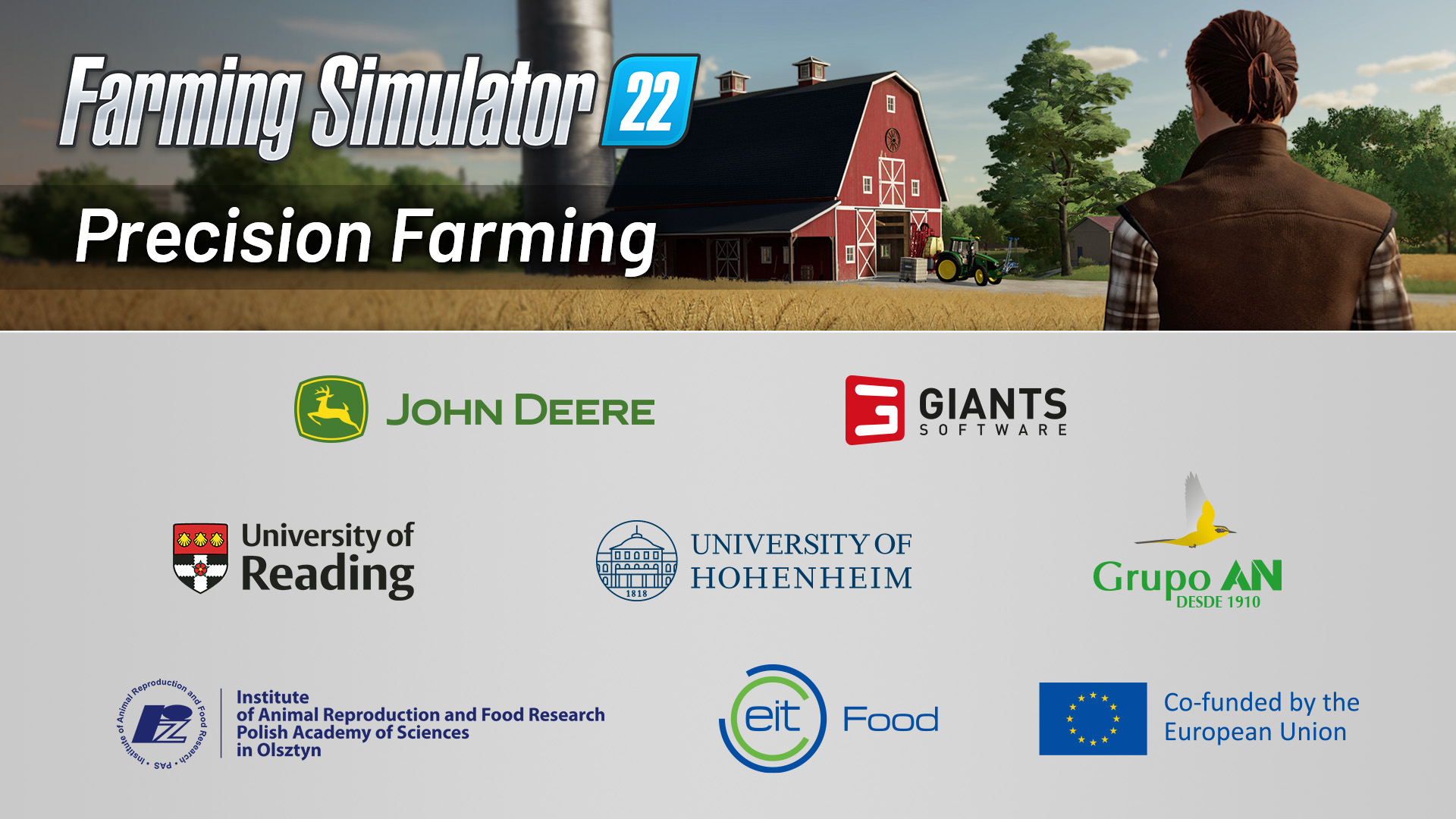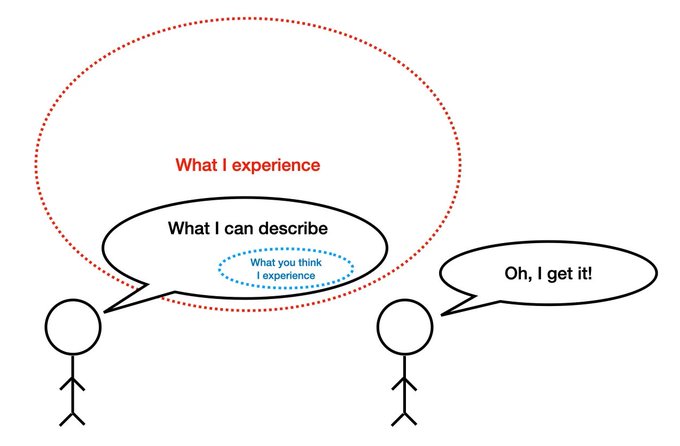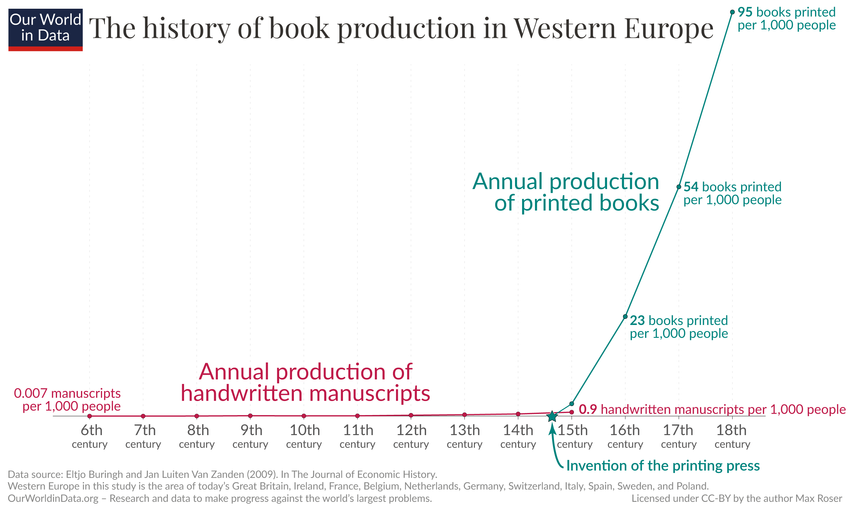
Châtenay-Malabry (FR - 92290), August 28, 2023
EFITA newsletter / 1077 - European Federation for Information Technology
in Agriculture, Food and the Environment
The informatique-agricole.org site offers you the possibility of subscribing
the RSS feeds of its two newsletters
See RSS feeds
to implement to ensure that you continue to receive this newsletter
To unsubscribe
this newsletter, please contact me directely: guy.waksman(a)laposte.net
if this
link Unsubscribe does not work.

To correspond with me (GW), please use this address: guy.waksman(a)laposte.net
To subscribe the efita newsletter (please ask your friends and colleagues
to test this link)
Efita
Newsletters subscription
Avant l’informatique / Before computers : Les batteuses Merlin fabriquées
à Vierzon / Merlin threshers manufactured in Vierzon (FR)
Signalé par Pierre DEL PORTO
Mél : pierre.delporto(a)gmail.com
|
28/08/2023
|
 |
|
45 Cultural UNESCO World Heritage Sites In France
See
inspiredbymaps.com
3 reasons to attend #FIRAUSA23
September 19-21 in Salinas Sports Complex (CA)
#1 - A unique place to see 35+ robots in action!
#2 - Participate in exclusive and exciting panels on current topics in agricultural
robotics
#3 - Extend your network and make business with 2,000+ attendees
See fira-usa.com
Weekly newsletters about ICT in Agriculture in English and French
Both newsletters have around 5000 subscribers.
>>> Last weekly EFITA Newsletters in English (created in 1999)
Efita
Newsletters
>>> Last weekly AFIA Newsletters in French (created more than 20
years ago in 1997) Afia
Newsletters
>>> Statistics
for the latest efita newsletter
>>> Latest
issue of the afia newsletter
>>> Latest
available satistics for the afia newsletter
The Hay Makers by Harold Septimus Power (1878-1951), Australian
|
01
- 28/08/2023
|
 |
|
Resting by Harold Septimus Power (1878-1951), Australian
|
02
- 28/08/2023
|
 |
|
How did we see the future yesterday??
See
the incredible collection developed by Alain Fraval
FutureFarming.com
> Alternative energy source for diesel engine in tractor, how do you
like that?
The diesel engine is increasingly under discussion. Manufacturers are
working on alternative energy sources.
> Cybersecurity: Evolving – and catching up – with cyber threats |
Part 2
From contemporary cyber privateers to profit-driven criminals and activist
collectives, the range and tactics of cyber criminals are continuously
advancing.
> Electric Vktor: Alessandro Pennese unveiled Vktor, autonomous and
electric
In the pursuit of a more sustainable and productive agricultural industry,
Alessandro Pennese has unveiled Vktor — an autonomous electric vehicle
system that enhances farming efficiency.
> Fertilizers: Less use of fertilizer thanks to test strips and satellite
data
A new technology will facilitate quick, easy and precise fertilizing in
the field in the future.
> Trends in drones: Ag-drone capabilities are improving at a rapid
pace
More and more large capacity commercial spray drones are available on
the market.
> Market information: Intelinair, Eiwa announce research collaboration
and distribution agreement
Intelinair and Eiwa announced that they have entered into a multi-year
research collaboration and distribution agreement.
> The People v. Tech: Forecasting the Future of Farming
The transformations in healthcare can help agribusinesses forecast and
prepare for the future of farming. Read the expert opinion of Aidan Connolly.
> Disease control: Drone images help to fight Botrytis
Six growers use satellite and drone technology to detect diseases and
pests at an earlier stage.
> Bruised potatoes: B-hive secures project funding to reduce bruised
potato waste
B-hive Innovations secures project funding to reduce bruised potato waste.
> Market information: Intelinair, Eiwa announce research collaboration
and distribution agreement
Intelinair and Eiwa announced that they have entered into a multi-year
research collaboration and distribution agreement.
> Robot Vktor: Alessandro Pennese unveiled Vktor, autonomous and electric
In the pursuit of a more sustainable and productive agricultural industry,
Alessandro Pennese has unveiled Vktor — an autonomous electric vehicle
system.
> Join over 450+ agri-food players in the transition
Join 450+ key players across the food value chain at this year's Regenerative
Agriculture & Food Systems Summit and identify new opportunities and
challenges for incentivising and onboarding hesitant farmers, whilst implementing
nature positive strategies to accelerate the transition to regenerative
agriculture.
> Alternative energy: Alternative energy source for diesel engine in
tractor, how do you like that?
The diesel engine is increasingly under discussion. Manufacturers are
working on alternative energy sources.
> Isobus controls: Krone announces a modern view of Isobus controls
German machine manufacturer Krone introduces a new, more modern view of
Isobus controls, which works with animations and 3D graphics.
> Yield mapping root crops: from weighing to counting?
If you want to know what’s been going on on your fields, yield mapping
is the way to go.
> Harvest data: Gaining control over harvest data and labour expenses
> Drying grain: Radio waves to dry grain by Dry Max Solutions
> Artificial intelligence: AI squeezes 15% more juice from orange orchards
> Farmwave: Mitigating losses by using AI-based software
> Are you a Future Farming member yet?
Don't miss out on essential information. Unlock all our content with a
subscription for only €9.95 per month. Be prepared for the future and
improve your knowledge with exclusive access to our content. We keep you
updated about the latest trends, innovations, and opinions.
> VDI conference: time ripe for automation and robotics?
EBC leads Seed Round into Raspberry picking Robot developer.
> Raspberry picking: Seed Round into Raspberry picking Robot developer
> Ag-drone capabilities are improving at a rapid pace
More and more large capacity commercial spray drones are available on
the market.
> Anomalies? Detected!
Industrial cameras deliver images? Of course, but they can do much more:
they identify and locate objects, detect deviations from the norm – such
as damaged produce – and even trigger follow-up processes in connected
systems. Discover now the possibilities and workflows of the user-friendly
AI Vision System IDS NXT!
> Photo contest: Future Farming photo contest; Capture the face of
modern farming!
Join the Future Farming Photo Contest 2023/24 and unveil the captivating
world where drones soar, autonomous robots roam, and smart machines cultivate
the future of farming.
> Fertilizers: Less use of fertilizer thanks to test strips and satellite
data
A new technology will facilitate quick, easy and precise fertilizing in
the field in the future.
> AI in orchards: AI squeezes 15% more juice from orange orchards
Brazilian orchards currently produce between 6 or 7 of every 10 bottles
of orange juice consumed around the globe,
> Drone approval: Pyka gets approval to operate its autonomous crop
spraying aircraft in US
US manufacturer Pyka has received approval from the US FAA to operate
its autonomous crop spraying aircraft Pelican commercially nationwide.
> AI in cucumbers: Dutch WUR researchers grow cucumbers using artificial
intelligence
The project AGROS aims to realize an autonomous greenhouse in which cultivation
is remotely controlled by artificial intelligence (AI).
> Wireless charging: Tesla completes acquisition of wireless charging
company Wiferion
Tesla has completed the acquisition of wireless charging company Wiferion.
> Cybersecurity: Evolving – and catching up – with cyber threats |
Part 1
From modern day cyber privateers to cash-hungry criminals and activist
organizations, the scope and methods of cyber criminals continues to evolve.
> Wireless camera: Solar powered wireless camera system
The German manufacturer Bergmann & Koch has developed a new solar-powered
wireless camera system.
> Harxon GNSS Solution for Precision Agriculture Auto Guidance
Harxon smart antennas are designed for precision agriculture, they can
greatly increase GNSS availability, accuracy and reliability, suitable
for agriculture OEMs, integrators that develop precision agriculture solutions,
and autonomous solution providers.
> Cybersecurity: Evolving – and catching up – with cyber threats |
Part 1
From modern day cyber privateers to cash-hungry criminals and activist
organizations, the scope and methods of cyber criminals continues to evolve.
> Drones: Pyka gets approval to operate its autonomous crop spraying
aircraft in US
US manufacturer Pyka has received approval from the US FAA to operate
its autonomous crop spraying aircraft Pelican commercially nationwide.
> Artificial intelligence: Dutch WUR researchers grow cucumbers using
artificial intelligence
The project AGROS aims to realize an autonomous greenhouse in which cultivation
is remotely controlled by artificial intelligence (AI).
> Weed control: Tackling weeds integrally, these are the options
Keeping crops free of weeds without the use of herbicides is becoming
increasingly difficult. Weed control will require a more integrated approach
in the future.
> Harvest robot: EBC leads Seed Round into Raspberry picking Robot
developer
Elbow Beach Capital has committed £1.5m to an ongoing £2m+ fundraise.
> Connectivity: Cemis 1200 simplifies the management of reference tracks
and tramlines
Claas has added new functions and features to its Cemis 1200 Universal
Terminal.
See futurefarming.com
Girls Reaping by Léon-Augustin Lhermitte (1844 - 1925)
|
03
- 28/08/2023
|
 |
|
The Harrow by Harold Septimus Power (1878-1951) , Australian
|
04
- 28/08/2023
|
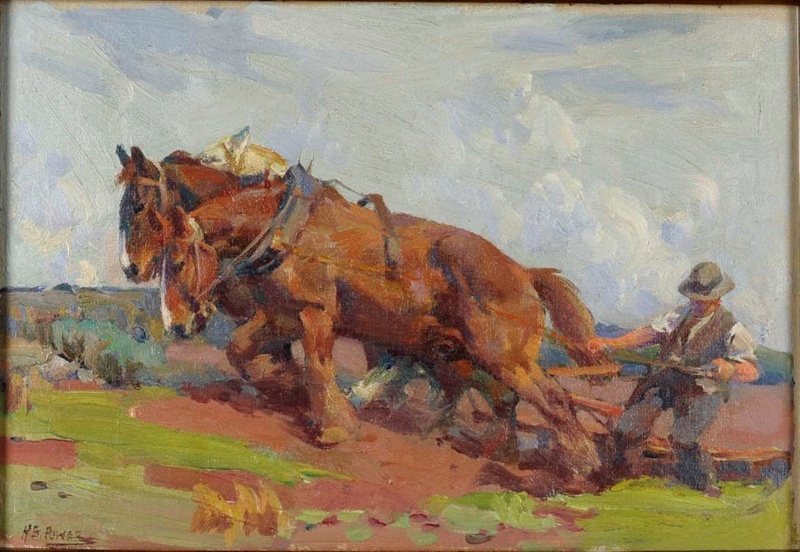 |
|
Global ag tech initiative
> Brazilian Agtech Startup Brings Aerial Application Management Platform
to North American Market
Perfect Flight, a developer of an aerial spraying management and traceability
platform, is poised to expand its operations in the U.S.
> How Technology Is Making Heavy Equipment More Available to Farmers
Technology helps farmers access heavy equipment so they can maximize
their operations without incurring high ownership costs.
> Voices of Women in Ag Tech: Ambassador Profile on Robyn Heine
We bring you exclusive insights from our inspirational ambassadors and
other women leading the way forward in ag tech.
> Revolutionizing the Food Supply Chain: How Blockchain Technology
is Transforming Agriculture Worldwide
Blockchain automates manual processes, reducing the time and cost involved
in moving products from farm to table.
> Will the Convergence Between Artificial Intelligence and Precision
Agriculture Lower Farming Costs? (ARK Invest)
> How Can Computer Science Help Farmers Grow Food More Sustainably?
A computing system can draw on agricultural knowledge from many different
schools of thought to help farmers identify the best options for their
land.
> Predictive Analytics Tool Adds Corn and Soybean Foliar Diseases
to Complete Bio Panel
These additions from Pattern Ag will add detection for damaging above-ground
pathogens, including Tar Spot, Gray Leaf Spot, Goss’s Wilt, and more.
> AMVAC: Trending Forward in Ag Technology
Discover how AMVAC is shaping the future of agriculture with its forward-thinking
approach to technology. Through groundbreaking solutions and partnerships,
AMVAC is at the forefront of agricultural innovation. Dive into their
journey of enhancing crop protection and optimizing yield.
> Greenhouse Technology: Why Choosing the Right Irrigation System
Is the Key to Optimizing Crop Quality
To effectively harness the potential of water in enhancing crop yields,
an efficient and suitable irrigation system is of utmost importance.
> Biome Makers Wins 'AgTech Data Analytics Solution Of The Year'
With the world's largest taxonomic database of microorganisms, Biome
Maker's BeCrop Technology provides soil health intelligence and recommendations.
See globalagtechinitiative.com
Agfundernews.com
> Africa’s smallholder farmers need access to irrigation technologies
before 4IR (i.e. Fourth Industrial Revolution and Precision Agriculture)
agtech solutions can take off, by guest contributor Prosper Chikomo
> Clearing the air: Neoplants disrupts air purification market with
bioengineered houseplants, by Elaine Watson
> Africa’s smallholder farmers need access to irrigation technologies
before 4IR (fourth industrial revolution) agtech solutions can take
off, by guest contributor Prosper Chikomo
> ‘Boil the weed inside out’: RootWave launches high-frequency, ‘regen
ag-friendly’ weed zapper for orchards, by Jennifer Marston
> The Week in AgriFoodTech: BP invests in green hydrogen, Toyota
funds carbon measurement, Bushel gleans $26m, by Jennifer Marston
> Data snapshot: 5 years of agrifoodtech investment in India,
by Jennifer Marston
> Entocycle & Bühler partner to cut the ‘trial and error’ phase
from large-scale BSF (Black Soldier Fly) production, by Jennifer Marston
> Grain-trading platform Bushel raises $26m to build up ‘the Holy
Grail’ of agrifintech software, by Jennifer Marston
> The Week in AgriFoodTech: Bayer & Shell tackle rice farming
emissions, Mosaic launches biologicals business, by Jennifer Marston
See agfundernews.com
A spell by Harold Septimus Power (1878-1951), Australian
|
05
- 28/08/2023
|
 |
|
Hard at work by Harold Septimus Power (1878-1951), Australian
|
06
- 28/08/2023
|
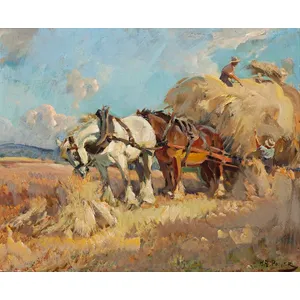 |
|
America’s Farmers Are Bogged Down by Data, by Belle Lin, WSJ, Aug.
22, 2023
Uptake of agtech tools has been tepid, and even many farmers who do
use them struggle with the software and a flood of data from their
farms.
A decade after data analytics promised to revolutionize agriculture,
most farmers still aren’t using data tools or specialized software,
and of those who do, many are swamped in a deluge of data.
In 2013, seed and pesticide giant Monsanto acquired agriculture-data
firm Climate Corporation for $1 billion, helping spur the industry’s
mania for data-driven farming. The hope was that by outfitting farmers
with software and tools capable of ingesting and analyzing troves
of data on things from weather patterns to soil conditions, they could
more efficiently use their land.
Many are still waiting for the technology to pay off.
In the U.S., less than half of farmers surveyed by consulting firm
McKinsey are using farm management software, and 25% are using remote-sensing
and precision agriculture hardware.
That software is a foundational technology in enabling the autonomous
machinery and AI-enabled equipment of the future, analysts say, and
unless farmers start using it, some will be left behind in the next
decade of farm innovation. At the moment, 3% of American farmers said
they plan to adopt software or precision agriculture hardware over
the next two years, according to McKinsey.
.../...
Data privacy is a concern for farmers, too—some are reluctant to share
detailed information on their farm’s operations with startups and
agribusinesses, fearing those businesses could raise prices or otherwise
monetize their data, said agribusiness analyst and consultant Shane
Thomas.
Meanwhile, farms of all sizes are pressured by the higher costs of
seed, pesticides and fertilizer, an intensifying labor shortage and
adverse weather events. The country’s smallest farms have been increasingly
driven out of business by larger operations, which can more efficiently
use technology and pay for upfront investment costs.
Still, it’s possible the newer tech could help smaller growers keep
up against their larger competitors, according to USDA researchers.
Jerry Seuntjens, a corn and soybean farmer in Kingsley, Iowa, who
works about 2,200 acres, said farm management software has helped
his farm -“a one-man show”- mitigate the impact of labor shortages
and higher costs.
Iowa is in its third year of a drought, Seuntjens said. But technology
has improved his per-acre yield by eight to 18 bushels on corn, and
three to 12 bushels on soybeans.
“If I can gain more yield and not have to make an extra pass going
across a field, or use extra equipment, why wouldn’t you?” he said.
See
wsj.com
How artificial intelligence could help us talk to animals, By Kathryn
Hulick, August 17, 2023
What might sperm whales and other animals be saying to each other?
A sperm whale surfaces, exhaling a cloud of misty air. Its calf comes
in close to drink milk. When the baby has had its fill, mom flicks
her tail. Then, together the pair dive down deep. Gašper Beguš watches
from a boat nearby. “You get this sense of how vast and different
their world is when they dive,” he says. “But in some ways, they are
so similar to us.”
Sperm whales have families and other important social relationships.
They also use loud clicking sounds to communicate. It seems as if
they might be talking to each other.
Beguš is a linguist at the University of California, Berkeley. He
got the chance, last summer, to observe sperm whales in their wild
Caribbean habitat off the coast of the island nation of Dominica.
With him were marine biologists and roboticists. There were also cryptographers
and experts in other fields. All have been working together to listen
to sperm whales and figure out what they might be saying.
.../...
See
snexplores.org
What is Precision Agriculture and How is it Revolutionizing Farming
for a Sustainable Future? By Frank Kettey, July 2, 2023
In an era of rapidly advancing technology, the agricultural industry
is undergoing a major transformation. Precision Agriculture, also
known as precision farming or smart farming, is at the forefront of
this revolution. This innovative approach integrates technology, data
analytics, and advanced tools to optimize farming practices, improve
productivity, and reduce environmental impact. In this post, we will
delve into the concept of Precision Agriculture, its key components,
and the significant benefits it offers for farmers and the global
food system.
Contents
1 What is Precision Agriculture
2 Key Components of Precision Agriculture
3 Benefits of Precision Agriculture
4 Future Trends and Innovations
5 Conclusion
See nobowa.com
Precision Farming Achieved 3 Million Downloads!
Highlighting innovations in sustainable agriculture and food production,
the Precision Farming DLC has become the most popular serious gaming
downloads for Farming Simulator 22.
Initiated by John Deere and the EIT Food, and developed in cooperation
with the Institute of Animal Reproduction and Food Research of the
Polska Akademia Nauk, Grupo AN in Spain, the Universität Hohenheim(Germany),
University of Reading(UK), this EU funded project has the goal to
showcase and educate about modern solutions in farming within an easily
accessible setting.
Players can download and install the free Precision Farming DLC (DownLoadable
Content) and learn using sensors to measure soil characteristics,
and employ this information to optimize returns while preserving resources.
You can find out more about the game and the free DLC on our webpage.
No Chinese post-Covid rebound
|
01
- 28/08/2023
|
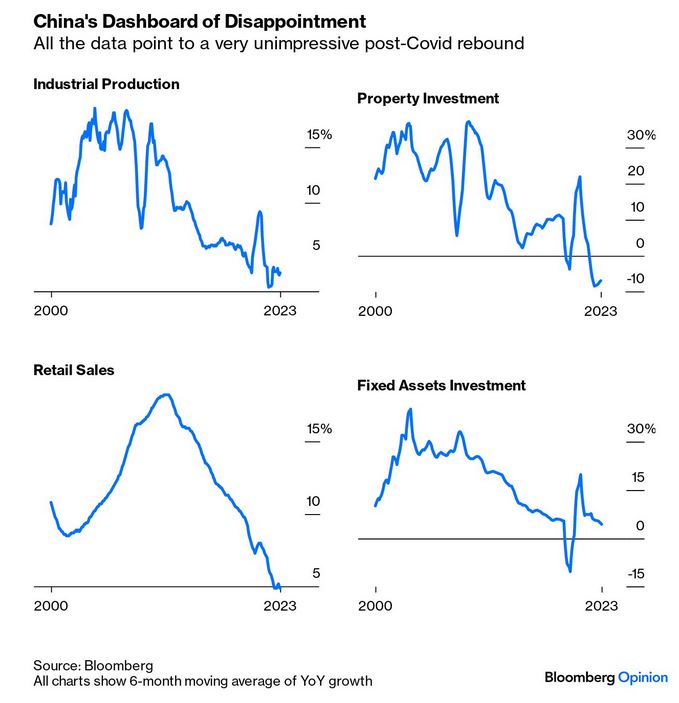 |
|
Chinese EV Market Up (1)
|
02
- 28/08/2023
|
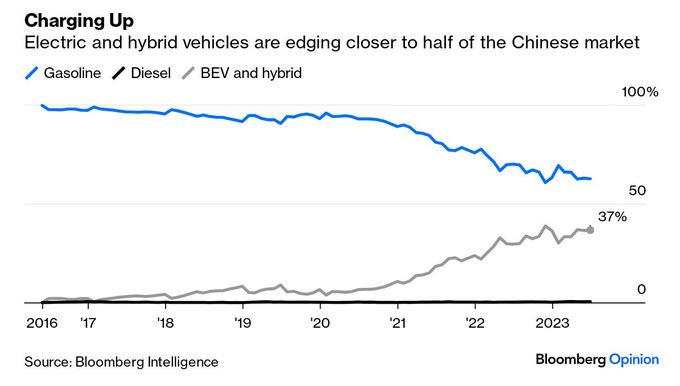 |
|
Chinese EV Market Up (2)
|
03
- 28/08/2023
|
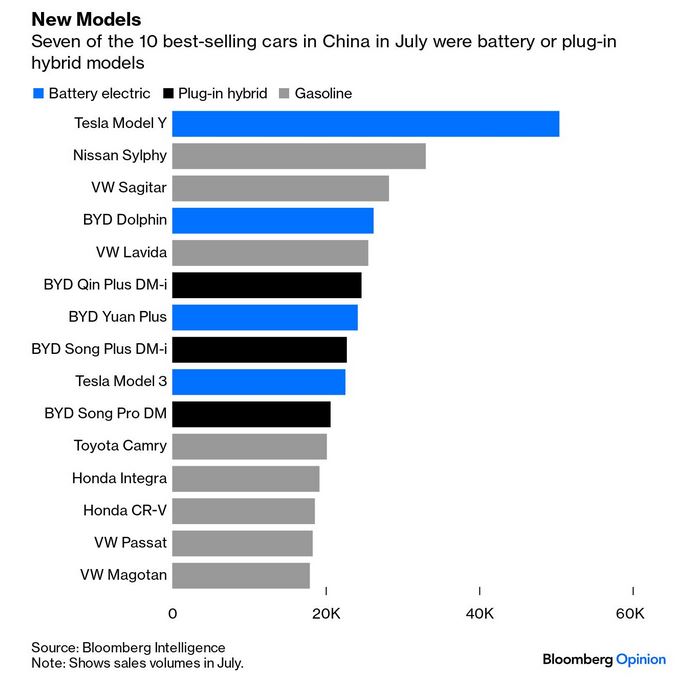 |
|
Chinese crisis?
|
04
- 28/08/2023
|
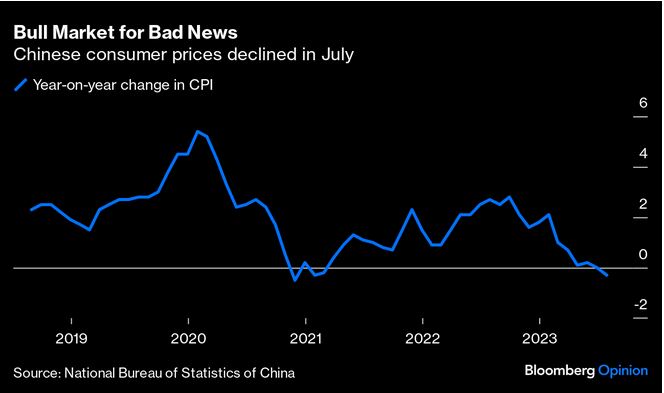 |
|
High 10-year Treasury yield, reflecting little confidence in the
future of the Chinese economy
|
05
- 28/08/2023
|
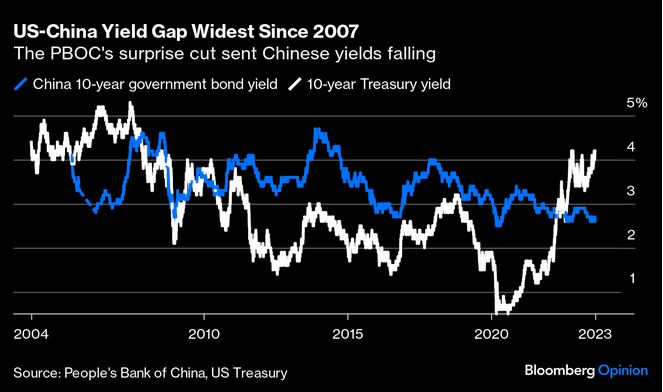 |
|
Chinese Economy and Its Property Sector
|
06
- 28/08/2023
|
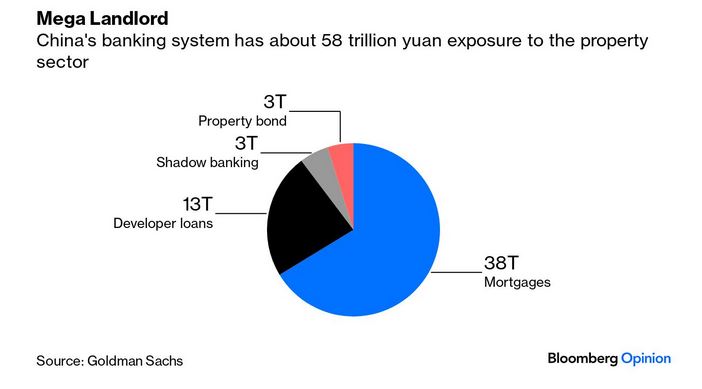 |
|
Polluting China
|
07
- 28/08/2023
|
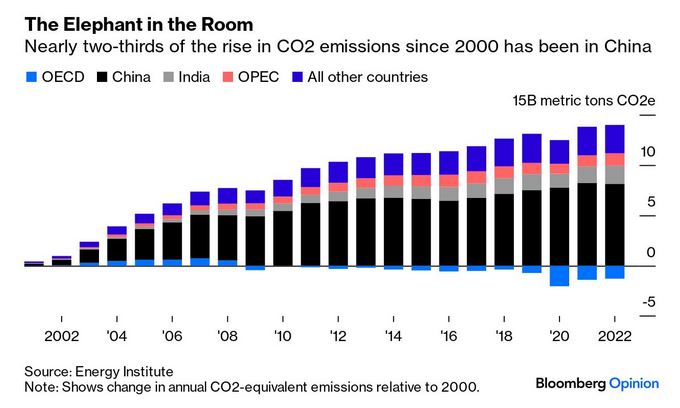 |
|
Chinese economy down
|
08
- 28/08/2023
|
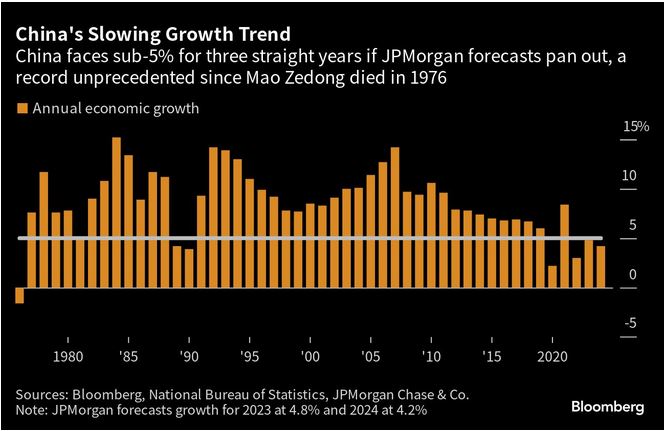 |
|
Drunk US male and female students (USA)
|
09
- 28/08/2023
|
 |
|
Available money (USA)
|
10
- 28/08/2023
|
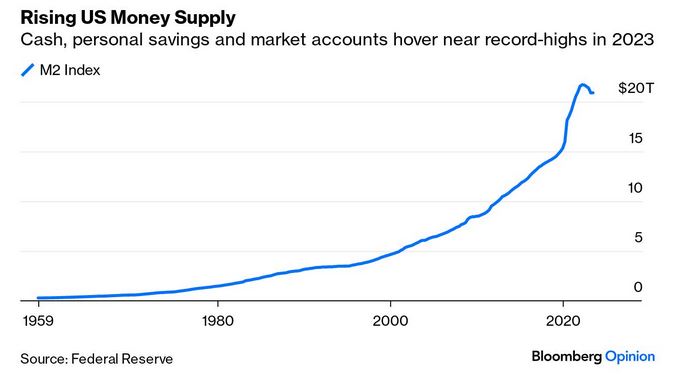 |
|
Climate czar John Kerry goes viral for ‘attack on American farmers’
John Kerry, the former Democratic presidential candidate and current
U.S. special presidential envoy for climate, is going viral for comments
he made criticizing food production’s contribution to carbon emissions
— something some have called “an attack on American farmers.”
In a video first
shared to the platform X (formerly Twitter), Kerry says that, globally,
agriculture accounts for anywhere from 26 percent to 33 percent of
greenhouse gases (though he zeros in primarily on the 33 percent number),
and that “we can’t get to net zero — we don’t get this job done —
unless agriculture is front and center as part of the solution.”
Perhaps Mr. Kerry
doesn’t realize that agriculture has been among the most active parts
of the climate solution for years?
…/…
See
agdaily.com
Why is healthy food so expensive in America? Blame the Farm Bill
that Congress always renews to make burgers cheaper than salad, by
Gene Baur, July 21, 2023
See
fortune.com
'Farm Bill programs should be revised to incentivize fruits, vegetables,
and other healthy foods and to make them more accessible and affordable.'
See
fortune-com.cdn.ampproject.org.
Freeing American Families: Fertility and Family Policy (a very
conservative and unproductive discourse refusing any compromise e.g.
to tackle climate change - GW)
As birth rates fall around the world, many policymakers are considering
new and expensive programs to encourage procreation. But is social
spending the best way to increase fertility?
This week, our managing editor Chelsea Follett joined other experts
to discuss her recent research that suggests supporting families means
getting the government out of the way.
See
cato.org
Removing Government Barriers to Fertility, by Chelsea Follett,
August 15, 2023
Larger populations of free people create more economic prosperity
through innovation, so policymakers shouldn’t make it harder for people
to become parents and raise children.
…/…
See
cato.org
My feeling about the above papers that may address real problems
(GW): I think this type of confrontation is profoundly unnecessary.
It seems obvious to me that ecologists were right to warn us about
the climate change. They were right before many of us. As far as I
am concerned, I have always looked favorably on the warnings from
environmentalists on the climate, thinking that saving fossil fuels
will always be positive. I never imagined that the climate could change
as quickly as it does.
Today I think we
need to work on measures to address the climate change by recognizing
the contribution of environmentalists. Is it possible to depolarize
the ecological debate?
What Could Go Right? How to depolarize?
With the 2024 election looming, we can still turn toward our fellow
citizens.
On Monday, the day that former president Donald Trump was indicted
in Georgia for efforts to overturn the results of the 2020 election,
I got into an argument with a close friend who is considering voting
for him again.
This friend is patriotic, a true lover of the United States. I told
him I didn’t understand why he would vote for someone who so clearly
doesn’t have the US’ best interests at heart. He told me that his
vote is none of my business. Emotions rose. Eventually, he said, “It’s
not right that you wouldn’t be friends with me anymore if I vote for
Trump.”
I was taken aback. “I never said that,” I responded. “Of course we
would still be friends.”
So much has been written about polarization in the US that writing
about it again feels passé. I’m uncertain how much the US has passed
through the trend of cutting off people we disagree with. But since
the 2024 election looks, at least for now, like it will be a Trump-Biden
rematch, it also feels necessary to continue to talk about depolarization.
.../...
Another way to depolarize is to remember that our experiences are
far greater than what we’re able to convey about them, as are everyone’s.
Climate doomerism is dangerous. Climate optimism is even worse...
Hope is crucial in effecting change. Blind optimism is not.
.../...
A recent Wall Street Journal piece calls “climate change obsession”
a “mental disorder.” It’s just one piece of an aggressive gaslighting
campaign—a term that’s overused but absolutely applicable in this
context. For reasons ranging from economic to emotional, very legitimate
fears are recast as not only inaccurate but also delusional, even
a sign of insanity. If only that were true. The reality is that catastrophic
thinking is completely appropriate in this case, when the effects
of climate change—not only the predicted effects but the ones we’re
already witnessing—are the definition of catastrophic.
When climate optimists critique panic-stricken climate-related communications
as irresponsible, they of course have a point: If we’re paralyzed
with fear and don’t believe that better outcomes are possible, we
set ourselves up to succumb to despair rather than take action. This
will mean something different for everyone, depending upon their interests
and talents—organizing a protest, asking a school cafeteria to offer
a vegan option, donating to an environmental charity, running for
office, etc. All that matters is that we remain at least a little
bit hopeful and do something.
As Michael E. Mann, professor and director of the Center for Science,
Sustainability, and the Media at the University of Pennsylvania recently
tweeted: “Concern, worry and alarm are often motivating. Doom and
despair are not.” The sentiment of doom is that there is no hope,
and that’s neither true nor useful. Sober, honest discussion about
the climate should inspire concern, worry, and alarm—not enough to
paralyze us, but enough to motivate us to take dramatic, unprecedented
action.
See
fastcompany.com
True Environmentalists Should Prioritize Economic Prosperity, by
Alexander C. R. Hammond
Prosperity frees people to protect the environment.
…/…
The World Economic Forum recently acknowledged that the significant
increase in bushmeat harvesting and wildlife trafficking in Africa
“is directly linked to COVID-19-related lockdowns.” Similarly, the
UK-based wildlife charity called People’s Trust for Endangered Species
has warned that “unintended consequences” of lockdowns could undo
“decades of work” devoted to animal protection.
Fortunately for mother nature, as economies begin to recover from
the government-mandated lockdowns, the number of people who rely on
illegal activities will decrease, and biodiversity will slowly recover.
However, the EKC and the wretched impact of lockdowns on poverty and
biodiversity teaches us an important lesson – true environmentalists
should seek to prioritize economic growth, not lower it. Poverty-reducing
policies, such as strong property rights, freedom to trade, lower
regulation, and few burdensome taxes, as shown annually in the Fraser
Institute’s Economic Freedom of the World Report, remain some of the
most reliable ways of raising economic prosperity for all.
In conclusion, poor people depend on mother nature to survive. Rich
people, in contrast, can decouple themselves from the environment,
protect wildlife for future generations, and return vast swathes of
land to nature. Now, what environmentalist wouldn’t want that?
See
humanprogress.org
Coche eléctrico: La carrera por las baterías de estado sólido, el Santo
Grial del coche eléctrico, de Pierre Lomba, El País, 23 Jul 2023,
Para 2027, Toyota prevé fabricar a gran escala esta tecnología, que permitirá
1.200 kilómetros de autonomía con recargas completas en 10 minutos.
…/…
Las baterías de base sólida pueden suponer el impulso que la industria
necesita para la transformación inevitable del parque automovilístico.
Si Toyota consigue producirlas en las condiciones que ha avanzado —y adelanta
así a las pujantes empresas chinas— “será una revolución, porque es algo
que la industria ha esperado mucho tiempo”, defiende Muñoz, que cree en
la capacidad del gigante japonés para alcanzar el hito. Por lo pronto,
los que confían son los inversores: desde el anuncio, las acciones de
la compañía japonesa en Bolsa se han disparado más de un 10%. En lo que
va de año, se ha revalorizado más de un 25% y se acerca a un récord de
cotización.
Ver
El País
What Apple did to Nokia, Tesla is now doing to the motor industry,
by John Naughton, The Guardian, 5 Aug 2023
.../...
Of course, it didn’t happen overnight. Among other things, the smartphone
revolution wouldn’t have been possible without ubiquitous mobile broadband
and the construction of the global infrastructure of colossal datacentres
that make cloud computing possible. But, for good or ill, it happened.
Hindsight is famously the only exact science, so it’s easy to mock incumbent
industries for fudging the future. And history never repeats itself exactly.
But there are some interesting similarities emerging between the tech
and automobile industries in this area. Nokia, for example, was a great
company, but it was founded on the idea that it was the hardware of a
phone that mattered most, with software coming a poor second. The iPhone/smartphone
model had it the other way round.
Toyota, in its turn, was (and still is) a great company. After all, it
invented “the Lean Machine” – the way all internal combustion engine (ICE)
cars are manufactured today. And modern ICE cars are governed by software
to some extent. But you can’t make an EV just by taking out the engine
and replacing it with an electric motor and a battery in place of the
fuel tank: you have to rethink the entire concept, much as Apple re-envisioned
the mobile phone. In crude terms, an EV is essentially a giant skateboard:
the battery is the board, with motors and wheels on the four corners,
and the whole machine is orchestrated by networked computers. Think of
it as software with wheels.
Which of course then raises the question: is Toyota the new Nokia? The
answer is up to Toyota. I just popped in to a dealer to see its first
real EV: the bZ4X. It’s an SUV and ugly in the way all SUVs are. But at
least it’s a skateboard. And cheaper than a Tesla.
See
theguardian.com
| |
The
Efita newsletter is sponsored by:

|
Fixing the Plough, by Harold Septimus Power (1878-1951) Australia
|
07
- 28/08/2023
|
 |
|
Hauling Timber, by Harold Septimus Power (1878-1951) Australia
|
08
- 28/08/2023
|
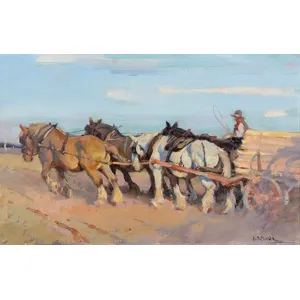 |
|
Why scientists shouldn’t eschew failure
It’s important to push back against the dominant narrative in academia that
success is the rule and failure is a crime, say scientists who have bounced
back from setbacks.
Sometimes, failure can be a springboard to leap into a satisfying career
path — and sharing experiences “takes a little bit of the stress off, so
[people] can relax a little bit and just do their best”, says microbiologist
Kati Geszvain, who “crashed and burned” on exams in her first PhD programme.
Stop pondering what could go wrong and start thinking about what to do when
it inevitably does, suggests molecular biologist Pearl Akazue. “Lots of
things will not be within your power.”
See nature.com
Kevin Folta (Professor, University of Florida) warns AI being used to
spread glyphosate disinformation
Citing an AI-generated news story from Wyoming claiming "agricultural
department" asserts glyphosate "cause[s] cancer," the University
of Florida professor notes the reference is actually to a municipal ag department
in India but was amplified by GM Watch; he asserts that such tactics will
become more prevalent.
See
kfolta.blogspot.com
Do forever chemicals really last forever?
.../...
Susan Goldhaber is an environmental toxicologist with over 40 years of working
for private, state, and federal agencies, such as the EPA. Goldhaber’s experience
writing drinking water regulations caused her to find the latest report
on PFAS chemicals somewhat conflated.
Susan Goldhaber: They sampled 716 locations. 716 locations for the entire
country is not very much. You need to say, what the whole country you know,
how big is this country? But their model came out and said, based on this,
there could be up to half the people with the PFAS. The thing that's missing
in all these articles is they don't talk about the levels. They're detecting
these at such low levels.
.../...
See
wng.org
Job hopping Among Young Adults
|
11
- 28/08/2023
|
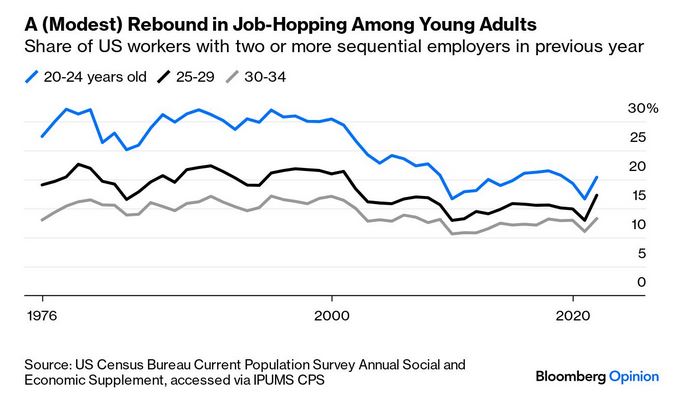 |
|
To believe or not
|
12
- 28/08/2023
|
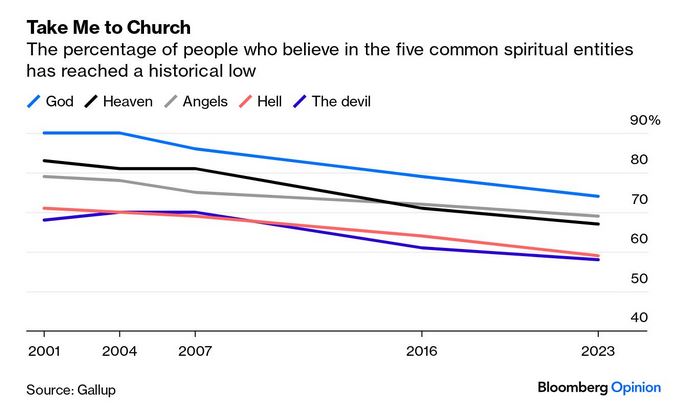 |
|
Too many firearms in Guatemala
|
13
- 28/08/2023
|
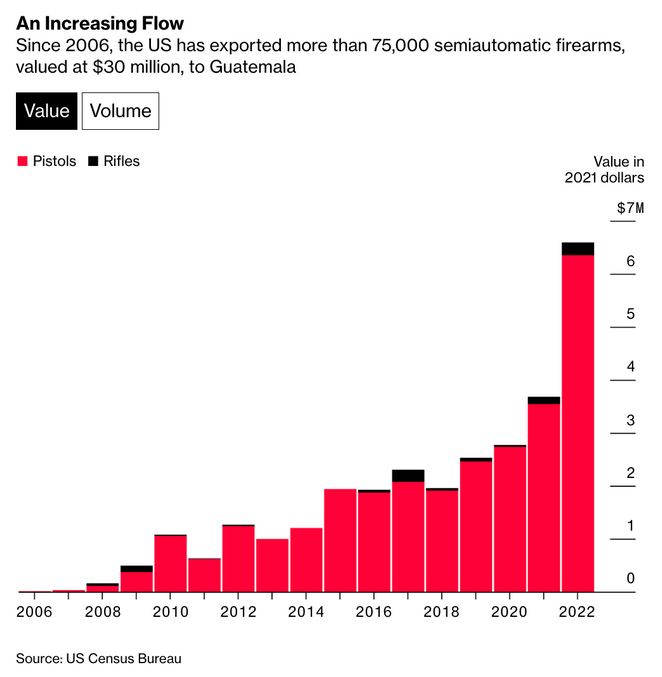 |
|
Saving money for retirement
|
14
- 28/08/2023
|
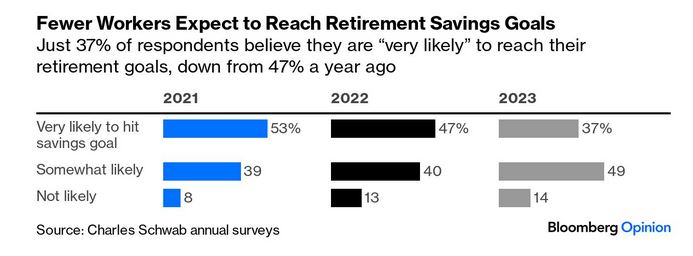 |
|
Expensive olive oil
|
15
- 28/08/2023
|
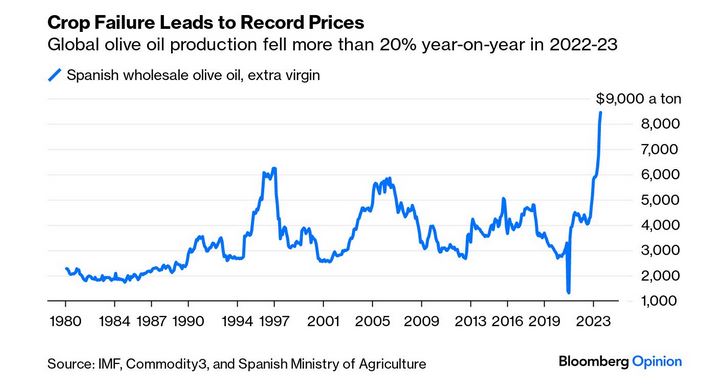 |
|
Luxury sector consolidation
|
16
- 28/08/2023
|
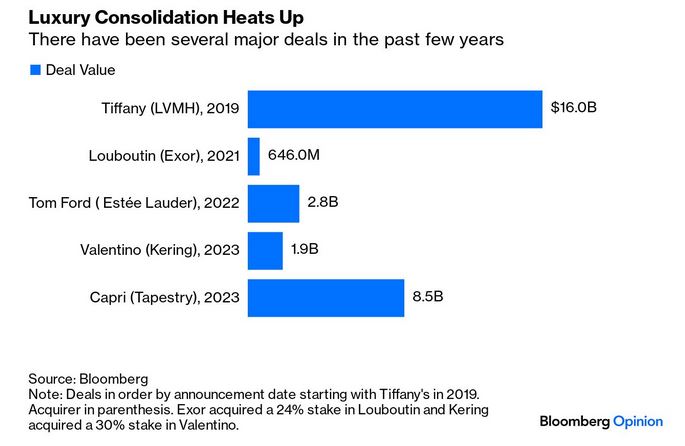 |
|
Antarctic sea ice cover down
|
17
- 28/08/2023
|
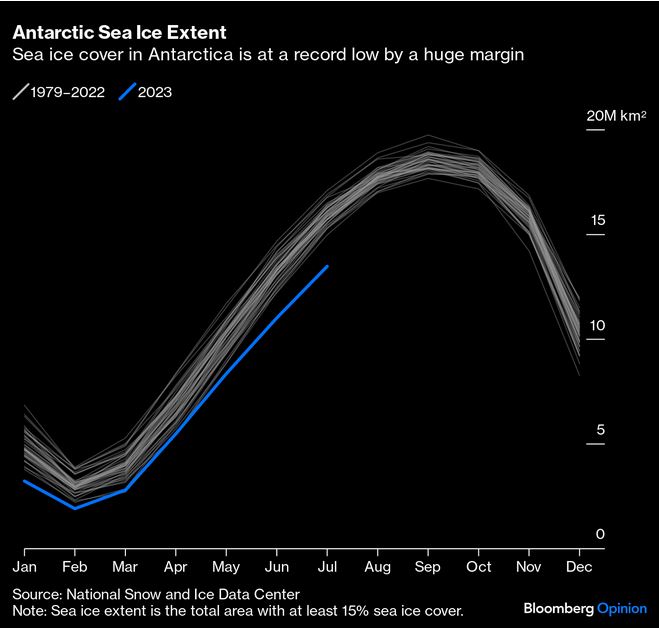 |
|
Shrinking US Racial Unemployment Gap
|
18
- 28/08/2023
|
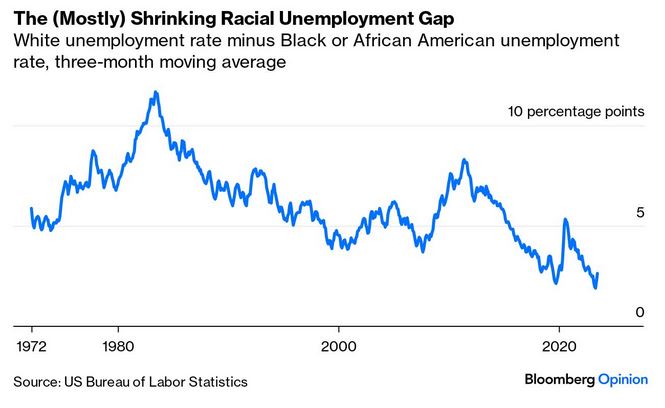 |
|
Unemployment rate
|
19
- 28/08/2023
|
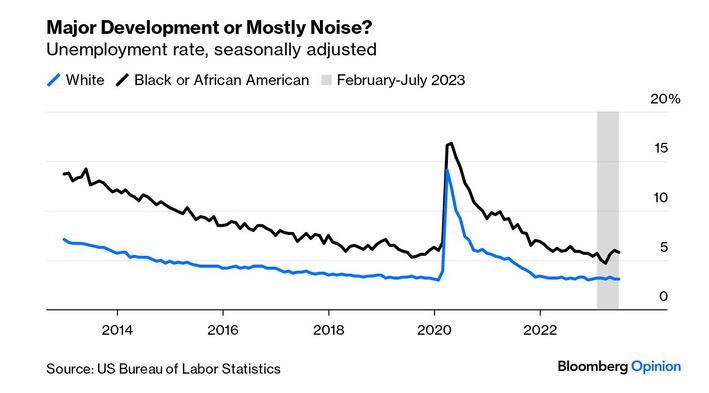 |
|
‘This way of farming is really sexy’: the rise of regenerative agriculture,
by Alexandra Topping, 14 Aug 2023
On the Isle of Wight Hollie Fallick and Francesca Cooper are part of a movement
to bring tired and depleted soil back to life – and boost food security.
See
theguardian.com
The farmers boosting crops with electricity
Electrical horticulture is on the horizon, as farmers search for ways to
boost productivity without harming the environment. Could we all be enjoying
electrified vegetables soon?
See
bbc.com
Safety Precautions in Agrochemical Handling and Usage, by K. Afrane Okese,
August 15, 2023
Exposure to agrochemicals puts many farmworkers at risk of various occupational
diseases. The exposure may be as a result of workers own negligence, inadequate
knowledge and safety systems. There are reports of acute cases with symptoms
typical of exposure to agrochemicals. To eliminate such hazards, we need
to take safety precautions in agrochemicals handling and usage.
.../…
See
nobowa.com/
From Poverty to Progress, by Chelsea Follett |
How division will stifle US prosperity? Why isn't everyone poor, sick, and
hungry?
After all, that's how we started. Poverty is the default state of humanity.
In his book, From Poverty to Progress, Michael Magoon pinpoints five "keys"
that he claims unlocked progress throughout history and across cultures.
See humanprogress.org
French 2023 soft wheat crop pegged at 34.8mn t (Agritel)
France's soft wheat production is due to rise just above average in 2023,
but will fail to match up to earlier expectations after favourable weather
conditions at the start of the season deteriorated in the run-up to harvest.
.../...
See
argusmedia.com/
CRISPR crops are here: Foods genetically edited using CRISPR technology
are beginning to hit store shelves. How are they different from GMOs? By
Paolo Pontoniere
See proto.life
Northern white rhinos are set for extinction. Only a technological moonshot
can save them, By Kevin Dickinson, August 6, 2023
Scientists hope to develop the advanced reproductive technology necessary
to resurrect the subspecies.
The northern white rhinoceros is doomed to extinction. All traces of the
subspecies vanished from the wild in 2007 — likely the victims of poachers.
The last remaining male, Sudan, died in captivity in 2018, leaving only
his daughter, Najin, and his granddaughter, Fatu, as the last surviving
members. Both live under 24-hour protective custody at Ol Pejeta Conservancy,
Kenya. However, health complications prevent either from carrying a calf
to term.
Such dire circumstances mean that traditional conservation strategies, such
as habitat protection or off-site breeding programs, are no longer viable
options for saving the species. In a few short decades, we’ll witness the
end of an evolutionary lineage millions of years in the making.
.../...
See
freethink.com
Poor ruble, poor Russia
|
20
- 28/08/2023
|
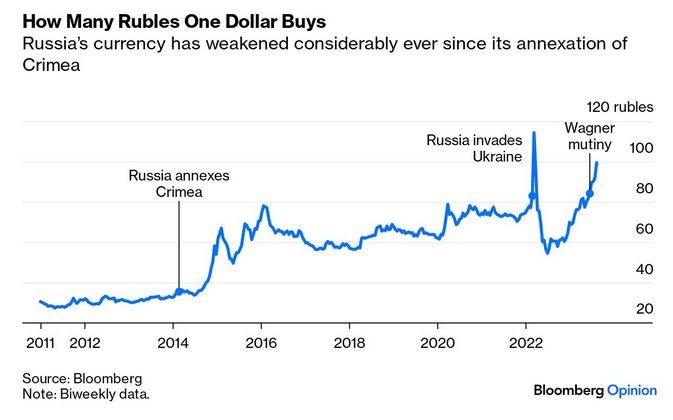 |
|
World inches closer to eradicating polio
Afghanistan and Pakistan — the last two countries in which polio is endemic
— could eradicate wild poliovirus by the end of the year. It’s a surprising
turn given that eradication efforts, which began globally in 1988, have
recently been called unsuccessful. Pakistan has reported just two wild
polio cases so far this year; Afghanistan has reported five.
To fully eliminate the virus worldwide, public-health specialists say
that vaccination and environmental-surveillance efforts must be sustained
despite persistent social and political challenges.
See nature.com
Why mathematicians follow their gut
Mathematics has a reputation of being all about cold, calculating logic
— but that couldn’t be further from the truth, says Eugenia Cheng. In
her new book Is Maths Real?, the mathematician and concert pianist aspires
to portray mathematics as a joyful experience that can help people to
think more clearly about the world. “In maths research, you don’t just
follow logical steps. If you do, you’ll never get anywhere interesting,”
Cheng says. “You have to use your gut instinct and feel your way through
something first, and then back it up with logic afterwards.”
See nature.com
What Medieval China Teaches Us about Overregulating Innovation, by
By Eamon Passey, August 17, 2023
European powers established their dominance through the very technologies
that China repressed.
In the Middle Ages, China was the pinnacle of global civilization, leading
the world in technology, infrastructure, and commerce. Some even claim
it was on the cusp of an early industrial revolution.
What went wrong?
In short, the Ming dynasty imposed stagnation in pursuit of stability.
Today's governments should take note.
.../...
As China fostered a long period of cultural and technological stagnation,
Europe entered a great age of individualism and innovation. By embracing
scientific progress and overseas commerce during the Renaissance, Europeans
made remarkable economic and technological strides, overtaking China as
the global economic and technological epicenter. In fact, European powers
used the very innovations that China repressed to establish their dominance—namely,
maritime and naval technologies. As the Ming Dynasty burned ships and
oppressed merchants, Europeans were establishing enriching trade routes
and colonizing the globe with their powerful navies. The British even
used these tools to later humiliate China during the Opium Wars. Thus,
the Ming Dynasty’s “anti-modernism” significantly contributed to the “Great
Divergence,” subjecting China to a centuries-long game of catch-up with
the West.
Therefore, as we consider a temporary termination of the deployment of
AI, the legacy of the Ming Dynasty provides a cautionary tale. Through
unregulated data collection and short-term jolts to the labor market,
AI certainly has the potential to disrupt existing stability. However,
there is something to be said about the potential upsides of AI development.
From automating monotonous tasks to revolutionizing modern medicine, many
benefits would be delayed by a pause in development, delays that, like
what happened in China, could set the United States back for decades.
Though techno-optimism has its own concerns, we must also be wary of the
over-implementation of the precautionary principle, for, as the Ming Dynasty
shows, ill-advised and overcautious social policy meant to preserve stability
can and often does foster costly stagnation.
See
humanprogress.org
It’s time for US agriculture leaders to challenge China in Africa,
by Kip E. Tom, The National Interest, August 14, 2023
Washington needs to present a better vision for Africa’s future than China—one
in which the continent’s vast agricultural potential is used to develop
self-sufficiency, environmental stability, and economic prosperity.
.../...
See
nationalinterest.org
Report: Plant-based proteins struggle amid costs and cravings
.../...
High price points and other lingering obstacles trigger sharp decline
in sales for plant-based meats according to CoBank's Knowledge Exchange.
“Lower price points and quality improvements in the category will resonate
with a large portion of consumers interested in a more flexitarian approach
to eating, whether due to environmental concerns or an interest in health,”
said Roberts. “These consumers will not abandon animal-based meats entirely
but augment their diets with plant-based options as occasions warrant
and the products can meet their needs.”
Innovations replacing highly processed varieties may more effectively
align plant-based meats in supermarkets while creating lower price points
that resonate with consumer interests. Although the majority of consumers
will not abandon animal-based meats entirely, simply supplementing their
diet with plant-based options that can better meet their needs.
See
agdaily.com
Hay Gathering, by Harold Septimus Power (1878-1951) Australia
|
09
- 28/08/2023
|
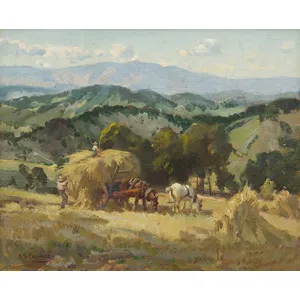 |
|
Draught Horses, by Harold Septimus Power (1878-1951) Australia
|
10
- 28/08/2023
|
 |
|
Mosquito-dwelling microbe stops malaria
Malaria-carrying mosquitoes are less likely to pass on the parasite that
causes the disease if they are infected with a naturally occurring bacterium.
The microbe secretes a chemical that hobbles the malaria parasite’s development
in the insects’ guts.
So far, researchers trying to prevent the spread of the disease have had
to rely on genetically modified bacteria — a major obstacle to regulatory
and public acceptance, says malaria researcher Carolina Barillas-Mury.
In experiments, one-third of mice bitten by bacterium-carrying mosquitoes
became infected, compared with 100% of those bitten by regular malaria
mosquitoes.
And the mosquitoes don’t seem to develop resistance against the bacterium
as they do to insecticides. The approach “has great potential to be implemented”,
adds Barillas-Mury.
See
science.org
USDA Invests $300K in Response to Extreme Weather Events Across the
U.S.
NIFA has funded — through the Rapid Response to Extreme Weather Events
Across Food and Agriculture Systems program — a Louisiana State University
project related to a tornado outbreak and high wind event. Rapid responses
to extreme weather events are critical to maintaining a secure, accessible,
safe, nutritious, affordable and abundant food supply. Innovative Extension
and applied research efforts are needed to alleviate the impacts of extreme
weather and disasters across the food and agricultural system.
The Rapid Response to Extreme Weather Events program, funded through the
Agriculture and Food Research Initiative (AFRI), is designed to rapidly
deploy strategies and fill knowledge and information gaps to protect the
nation’s food and agricultural supply chains — from production through
consumption — during and after extreme weather and disasters.
See
nifa.usda.gov
EPA Posts Resources on Rule to Accelerate Use of Plant-Incorporated
Biotechnologies to Protect Against Pests
The U.S. Environmental Protection Agency (EPA) is providing resources
to help biotechnology developers exercise the full benefits of the exemptions
available under the Plant Incorporated Protectants (PIPs) exemption rule.
These resources include the following:
- Fact sheet and background information on PIPs rule
- Examples of genetic modifications that are exempt under the rule
- Description of how to submit a self-determination or a request for EPA
confirmation of exemption under the rule
- Sample documents for submitting a self-determination or request for
confirmation
The PIPs Exemption Final Rule went into effect on July 31, 2023.
See
epa.gov
Modernization and the Loss of Japan’s Samurai Culture Benefited the
Japanese People, by Harry Backhouse
Economic, technological, industrial, and other progress radically improved
the life of the ordinary Japanese citizen.
Imagine you’re a farmer in Japan in 1850. You pay homage to your feudal
lord, wear clothes of plain cotton, eat rice and fish, and are mostly
preoccupied with surviving the occasional famine and outbreaks of disease.
You likely have no education.
Fifty years later, life has changed beyond recognition. Farmers now have
an education, have fertilizer to farm with, have access to vaccination,
and can use the telegraph and the postal service. They have more money
to spend, more leisure time, and access to mass media.
See
humanprogress.org
Eight Centuries of Increasing Food Abundance in England: Grains, by
Harry Backhouse
The growth rate of grain abundance has accelerated rapidly in recent centuries.
See
humanprogress.org
Why hand washing took time to catch on
Ignaz Semmelweis radically reduced rates of death in childbirth in the
middle of the nineteenth century — by introducing hand washing. Yet, at
the time, his ideas about infectious agents were rejected by the wider
community. A play about Semmelweis now showing in London focuses on why
his ideas failed to catch on. Although Dr Semmelweis acknowledges that
the medical establishment was at fault for its resistance to change, it
seems to place most of the blame on Semmelweis’s character, says reviewer
and writer Georgina Ferry. Amid his struggle to save women’s lives, he
offended his critics and fell out with even devoted supporters.
.../....
Semmelweis learns from hospital records that at 18%, the death rate of
mothers in the doctors’ ward is three times that in the midwives’. As
the doctors cross the stage through an empty door frame, we realize why:
unlike the midwives, they are constantly moving between the anatomy theatre,
where they plunge their hands into putrefying carcasses, and the obstetric
ward where they deliver babies.
.../...
See nature.com
Alzheimer’s drug trials lack diversity
Black and Hispanic people are up to twice as likely as white people to
develop Alzheimer’s disease, yet they made up no more than 20% of participants
in trials for new monoclonal antibody drugs against the disease.
This under-representation is partly because the trials selected participants
with high levels of Alzheimer’s-associated proteins in the brain — in
people of colour, these levels tend to be lower. The lack of diversity
is both an equity and a scientific problem, researchers say.
There are concerns over the safety and efficacy of the drugs in diverse
populations, and questions as to whether these trials fully address the
causes of dementia.
See nature.com
Zap these cells for insulin
Genetically engineered human cells that produce insulin when stimulated
by a small electric current could one day be used to develop insulin implants
for people with type 1 diabetes. Reactive oxygen species — unstable oxygen-containing
radicals that are produced when a current is applied — are involved in
a chain that switches on a gene needed to make insulin. Researchers implanted
the cells into mice with high blood sugar and used acupuncture needles
to apply a current — which triggered the cells to release insulin.
See nature.com
Don’t let small-scale producers disappear
As millions of people move from rural regions to cities, jobs in small-scale
food production are disappearing — and with them, intergenerational knowledge
about biodiversity and environmental management.
This trend needs to be addressed if we want to make progress on goals
for sustainable development, writes a group of anthropologists, food-security
researchers and biostatisticians. It will require investment in rural
sustainability, addressing poverty and inequity and ensuring the economic
gains stay local.
Crucially, it requires challenging the assumption that small-scale production
is unimportant for feeding the world’s people, the group says.
See nature.com
Less plastic in oceans than assumed: Dutch researchers
The extent of the plastic soup in the oceans may be much smaller than
assumed for the past two decades. Estimates ranged from 50 million tons
to 300 million tons of plastic waste floating in the oceans. But according
to researchers at Utrecht University, the actual amount is closer to 3.2
million tons, Trouw reports.
Utrecht University oceanologist Mikeal Kaandorp and his team based their
calculations on over 20,000 reliable measurements worldwide. According
to them, rivers, in particular, bring much less plastic to the ocean than
previously thought. Instead, much more plastic remains in the rivers than
previous estimations, they expect.
.../...
Biologist and campaigner against plastic soup Merijn Tinga is cautiously
optimistic about the Utrecht conclusions. “It is, of course, hopeful if
the plastic soup is less than expected,” she told Trouw. “But even if
the amount of waste is a hundred times smaller than previously thought,
it is still too much. It is especially a fortunate misfortune if the waste
lingers longer in the rivers where it is - relatively - easier to clean
up.”
See
nltimes.nl
Poor ruble, poor Russia
|
20
- 28/08/2023
|
 |
|
EV Market Up
|
21
- 28/08/2023
|
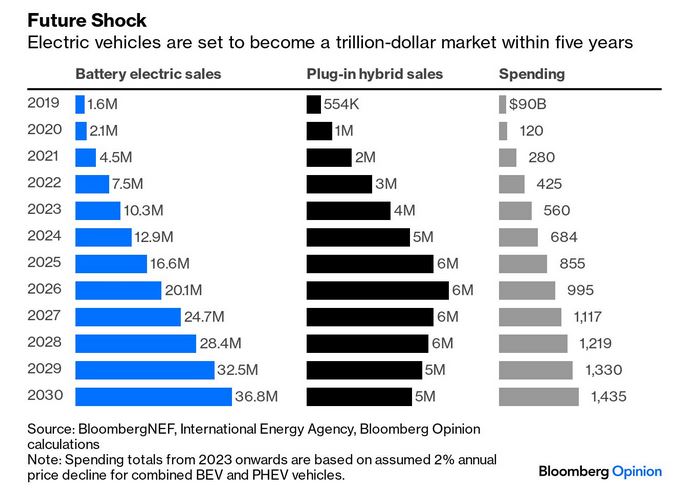 |
|
Mexican dollarization
|
22
- 28/08/2023
|
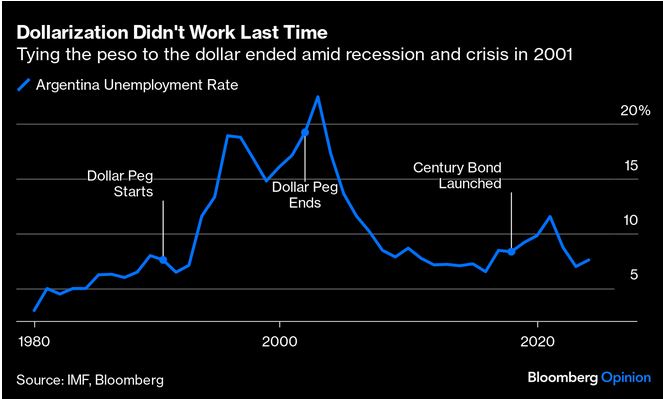 |
|
Passengers Up / Freight Down
|
23
- 28/08/2023
|
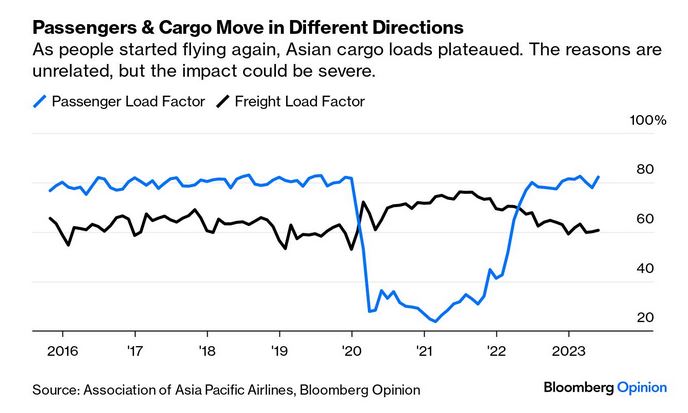 |
|
Solar Energy in South Africa Up
|
24
- 28/08/2023
|
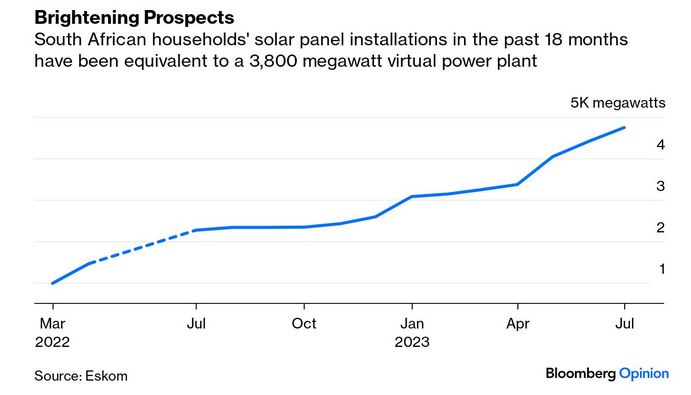 |
|
Threads failure
|
25
- 28/08/2023
|
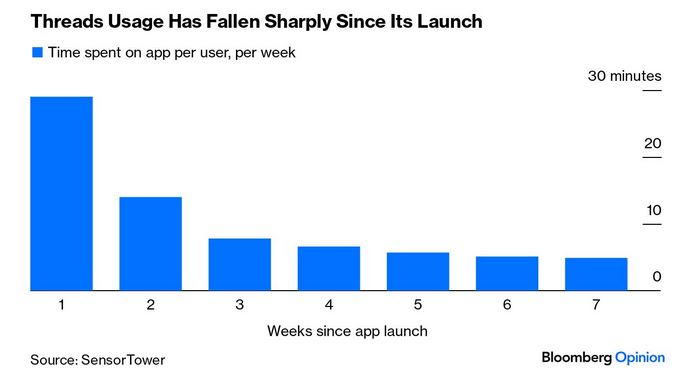 |
|
Instacart's grocery economy is stagnating
|
26
- 28/08/2023
|
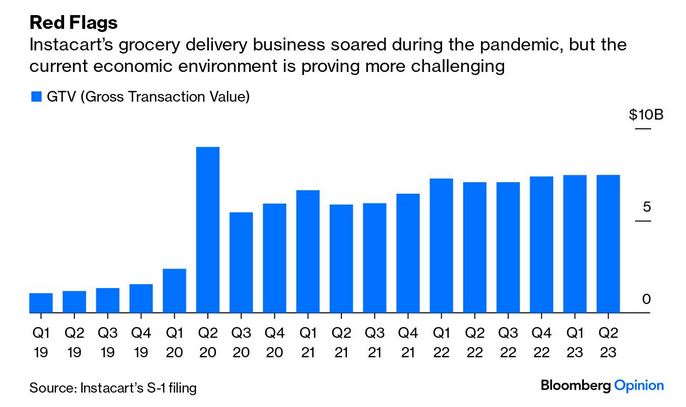 |
|
Harvard undergraduates are rich (This is not the case for master's or
thesis students)
|
27
- 28/08/2023
|
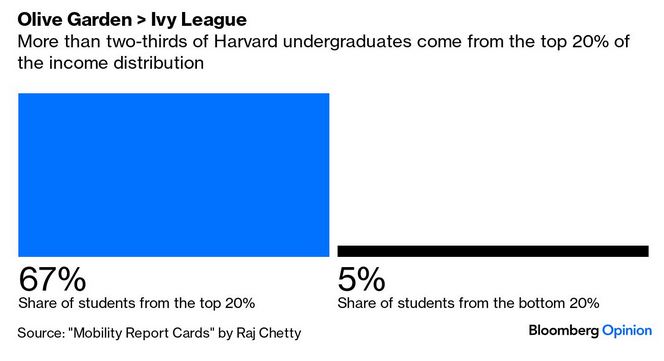 |
|
No uranium enrichment capacity in France / Little capacity in USA
|
28
- 28/08/2023
|
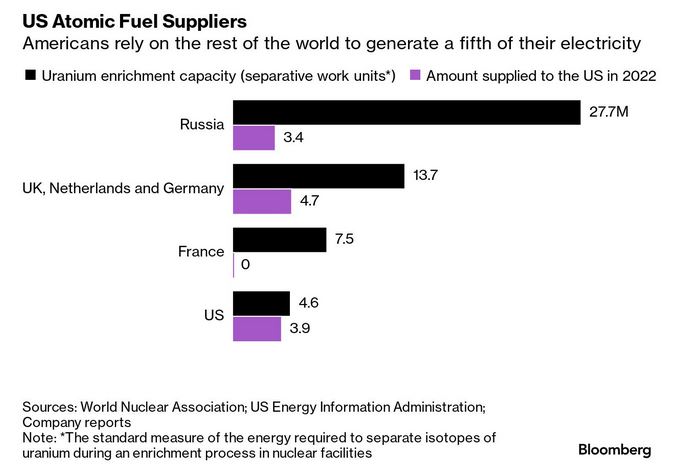 |
|
Two or three
|
28/08/2023
|
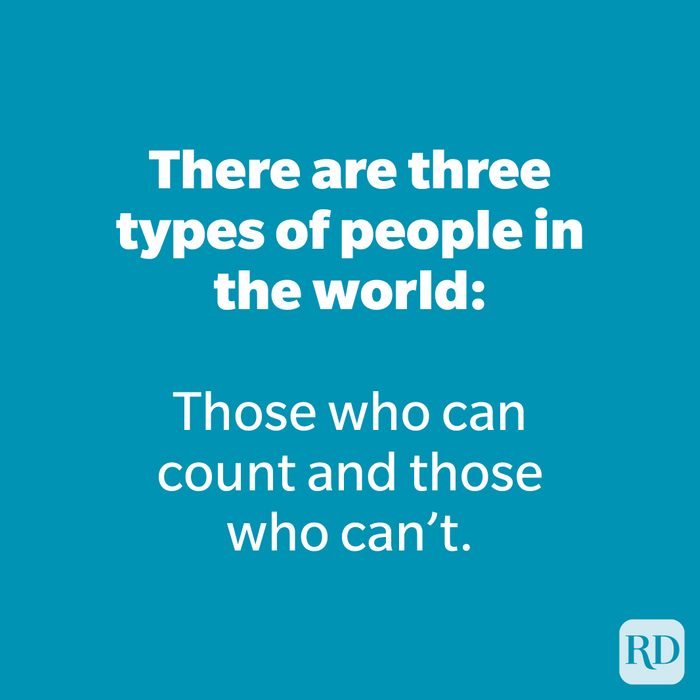 |
|
How does food affordability vary across the world?
Food prices refer to the average price of particular food commodities.
Food prices can vary a lot, and changes over time can often give us insights
into the underlying markets and agricultural production within countries.
The price of different foods gives an important indicator of the balance
between agricultural production and market demand. These prices matter to
consumers and producers. They have obvious impacts on consumer affordability.
But they also affect the income of farmers and producers.
In low-to-middle-income countries, a large share of the population is employed
in agriculture. Producers typically benefit from higher food prices; consumers
from lower prices. Food markets can therefore have a strong impact on food
affordability, hunger and undernourishment, and dietary quality.
On our new topic page on Food Prices, you can find data, visualizations,
and writing on global and country-level food prices and expenditures, the
affordability of food, and how this has changed over time.
At what age do people experience depression for the first time?
Depression can affect people over long periods of their lives. Some experience
this condition continuously, while for others it occurs in episodes, with
long stretches without symptoms.
When do people tend to experience depression for the first time? And when
are they first diagnosed?
In this article, we show that it takes years before people are diagnosed,
on average.
But this is improving. In many countries, depression is being diagnosed
at an earlier age than in the past — because of an increased openness to
mental health disorders and guidance to recognize these conditions in young
people.
What is economic growth? And why is it so important? By: Max Roser, May
13, 2021
The goods and services that we all need are not just there – they need to
be produced – and growth means that their quality and quantity increases.
Our World in Data presents the data and research to make progress against
the world’s largest problems.This post draws on data and research discussed
in our entries on Income Inequality, Global Extreme Poverty and Economic
Growth.
Good health, a place to live, access to education, nutrition, social connections,
respect, peace, human rights, a healthy environment, happiness. These are
just some of the many aspects we care about in our lives.
At the heart of many of these aspects that we care about are needs for which
we require particular goods and services: think of those that are needed
for the goals on that list above – the health services from nurses and doctors,
the home you live in, or the teachers that provide education.
Poverty, prosperity, and growth are often measured in monetary terms, most
commonly as people’s income. But while monetary measures have some important
advantages, they have the big disadvantage that they are abstract. In the
worst case monetary measures – like GDP per capita – are so abstract that
we forget what they are actually about: people’s access to goods and services.
The point of this text is to show why economic growth is important and how
the abstract monetary measures tell us about the reality of people’s material
living conditions around the world and throughout history:
In the first part I want to explain what economic growth is and why it is
so difficult to measure.
In the second part I will discuss the advantages and disadvantages of several
measures of growth and you will find the latest data on several of these
measures so that we can see what they tell us about how people’s material
living conditions have changed.
.../...
Homicide data: how sources differ and when to use which one
Measuring homicides across the world helps us understand violent crime and
how people are affected by interpersonal violence.
But, as with measuring many things we care about, measuring homicides is
challenging. Even homicide researchers do not always agree on the characteristics
that define a homicide. Even when a definition is agreed upon, it is difficult
to count each homicide.
In our work on homicides, we provide data from five main sources:
> The WHO Mortality Database
> The Global Study on Homicide by the UN Office on Drugs and Crime
> The History of Homicide Database by Eisner
> The Global Burden of Disease study by the Institute for Health Metrics
and Evaluation
> The WHO Global Health Estimates
In this article, we take a deep dive into these sources to understand where
they agree, where they differ, and why. We discuss what these differences
mean and when to use which source (answer: it depends on your questions).
We hope this deep dive serves as an example that helps you understand the
complexities of global statistics and demonstrates the utility of a nuanced
approach to extracting insights from such data.
Breaking out of the Malthusian trap: How pandemics allow us to understand
why our ancestors were stuck in poverty
Poverty and poor material living conditions were such a persistent and pervasive
reality for much of human history that it was unimaginable it could ever
be different.
Writing in 1798, the Reverend Thomas Malthus lamented the living conditions
in his native England: “It has appeared that from the inevitable laws of
our nature, some human beings must suffer from want. These are the unhappy
persons who, in the great lottery of life, have drawn a blank.”
In the past, our ancestors did achieve productivity increases (for example,
producing more crops or other goods), but this reliably led to a bigger
population, and not better living conditions for each individual. This has
come to be known as “the Malthusian trap,” after Thomas Malthus.
But Malthus turned out to be very wrong about the world’s reality after
his death: In the two centuries since then, many countries have broken out
of the Malthusian trap, achieved economic growth, reduced poverty, and improved
living conditions overall.
How did this happen? Why were our ancestors stuck in poverty for so long?
In this article we take a detailed walk through our past to understand why
our ancestors remained in poverty for so long, and why sustained economic
growth — where the material living conditions of a population increase over
several generations — was not achieved until just a few generations ago.
Malaria: One of the leading causes of child deaths, but progress is possible
and you can contribute to it
We do not have to live in a world in which 1,320 children die every day
from a disease that is preventable — malaria. Malaria is one of the leading
causes of child death.
We know that progress against malaria is possible because it was once prevalent
in many parts of the world that are now free of it today.
How have we made this progress, and how can we continue? Economic development
has played a key role, but this is a slow process.
There are opportunities right now to protect people from malaria — with
the use of insecticide-treated bed nets. This simple and cheap technology
has saved millions of lives in the last few years.
As we explain in the article, each of us can individually contribute to
this progress right now by making a donation to the organizations that are
achieving this change — for example by following the donation recommendations
at GiveWell.org.
A rabbi, a Hindu priest, and a politician went on a hike
Night fell and they were exhausted. The hotel on the map was nowhere to
be seen.
They knocked on the door of a farm and asked if they could spend the night.
The farmer said, “Of course, but I only have a small room with two beds.
One of you will have to sleep in the barn.”
The Hindu priest said, “I need no material comforts. I will gladly take
the barn.”
The rabbi and the politician were settling in when they heard a knock on
the door. They opened it to find the Hindu priest standing there.
“So sorry, my friends, but there is a cow in the barn, and I cannot sleep
beside such a holy animal.”
The rabbi said, “No problem, my brother. I’ll take the barn.
The Hindu priest and the politician were settling in when they heard a knock
on the door. They opened it to find the rabbi standing there.
“So sorry, my friends, but there’s a pig in the barn, and I can’t sleep
beside such a filthy animal.”
The politician said, “OK, let it be remembered that I sacrificed my comfort
for the greater good.”
The rabbi and the Hindu priest were settling in when they heard a knock
on the door. They opened it to find the pig and the cow standing there.
The creation of this efita newsletter is sponsored by Acta Digital
Services and its distribution by vitisphere.com
Please, contribute to the content of your efita newsletter, and advertise
your events, new publications, new products and new project in this
newsletter. Without your support, it will not survive!
Contact: Guy WAKSMAN
E-mail: guy.waksman(a)laposte.net
To read this newsletter on our web site
See Efita
The archives of this newsletter
See Efita
About the EFITA mailing list
You can use the efita moderated list (> 15000 subscribers) to announce
any event / product / web site / joke (!) related to IT in agriculture,
environment, food industry and rural areas.
If you want to subscribe a friend, please fill in his
form.
If you do not wish to receive our messages, please fill in the following
form...
|










